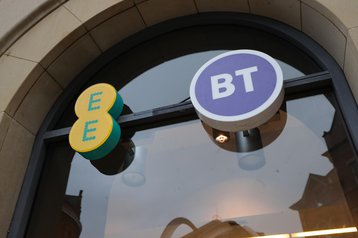BT and Stratospheric Platforms (SPL) have partnered up to trial using High-Altitude Pseudo Satellite (HAPS) aircraft to extend 5G coverage in the UK.
The trial, launched today, is being funded by Innovate UK. The amount invested has not been disclosed, though the research likely falls under Innovate UK’s Future Flight fund which has a total budget of £125 million ($152.5m). The hope is that the companies will be able to harness the hydrogen-powered-HAPS aircraft and antenna to deliver 5G coverage to rural and hard-to-reach areas of the UK.
The trials are being conducted at BT’s global research and development headquarters at Adastral Park in Suffolk, England. Using Stratospheric Platform’s new ‘Phased Array’ antenna technology that is designed to be mounted on a HAPS aircraft, it should be able to provide uninterrupted 4G and 5G connectivity directly to the end-user. While it is not explicitly stated in the press release, it is likely that the technology being used is SPLs ‘StratoMast,’ a sustainable HAPS antenna, first announced in 2021.
The technology is capable of delivering up to 150Mbps across areas as big as 15,000 sq km through 500 individually steerable beams. According to a press release from BT, this is an equivalent footprint to around 450 terrestrial masts.
Initially, the trial will involve placing an SPL antenna on a high building to simulate the high altitude platform and test its interaction with BT’s 5G architecture and OpenRAN testbed, seeing how well it can support multiple user groups and use cases.
Tim Whitley, managing director of research and network strategy at BT Group, noted the importance of HAPS in enabling BT to 'connect unserved rural areas and enable exciting new use cases for private users.' The technology may be able to assist various sectors in remote locations, including transport, maritime security, search and rescue, and provide a fallback for terrestrial networks in the event of disasters.
Richard Deakin, CEO of SPL, said: “The SPL team is excited to be working with BT Group to further advance its breakthrough UK-developed technology. This partnership will build further on SPL’s world-first 5G demonstration from the stratosphere achieved in 2022. With BT, we’re pleased to continue our journey supporting the UK to become a science super-power.”
In March 2022, SPL successfully conducted a HAPS 5G trial in Saudi Arabia. The aircraft flew at 45,000 feet and was able to connect to a smartphone.
BT merged with UK-telecoms provider EE in 2016. While EE has explored using unmanned aerial vehicles to provide mobile signals, it has up till this point been limited to the use of drones and air balloons for temporary connectivity.

